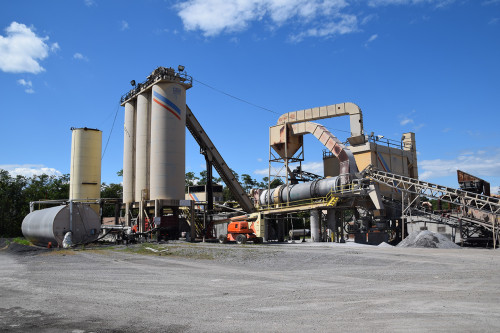Change Your Residential property's Landscape with Hot Mix Asphalt Paving Quality
Change Your Residential property's Landscape with Hot Mix Asphalt Paving Quality
Blog Article
Opening the Tricks of Warm Mix Asphalt Modern Technology
Discovering the midsts of warm mix asphalt modern technology reveals a globe where meticulous processes and precise formulations converge to form our roadways and framework. The blend of fillers, aggregates, and binders isn't just a building and construction job yet a calculated orchestration of longevity and performance. As we peer right into the complex dancing of elements, a tapestry of durability and sustainability unfolds. What exists under this surface area of asphaltic mastery, and what keys wait to be introduced in the realm of paving technologies?
Significance of Warm Mix Asphalt
Warm Mix Asphalt plays a crucial function in contemporary facilities growth due to its longevity and cost-effectiveness. As the most commonly used paving material for roads, highways, and vehicle parking great deals, Warm Mix Asphalt uses an array of benefits that contribute to its importance in construction projects.
The sturdiness of Hot Mix Asphalt comes from its structure, which includes aggregates, binder, and filler materials that are carefully selected and mixed to fulfill details efficiency demands. This exact combination leads to a flexible and solid sidewalk that can withstand frequent use without substantial damage. Additionally, Hot Mix Asphalt is 100% recyclable, further enhancing its sustainability and ecological advantages. Overall, the relevance of Warm Mix Asphalt in infrastructure development can not be underrated, as it continues to be a cornerstone of modern-day building and construction methods.
Components of Asphalt Mixes
The make-up of asphalt mixes is composed of thoroughly chosen accumulations, binder, and filler products that are essential for accomplishing details performance requirements. Aggregates are the main element of asphalt blends, giving strength and stability. The binder, usually asphalt or asphalt concrete, holds the accumulations with each other and gives flexibility and resilience to the mix.
The combination and proportion of these elements play a substantial duty in establishing the top quality and efficiency of the asphalt mix. Designers carefully design the mix to meet specific requirements, considering factors like traffic volume, climate problems, and sidewalk life-span. Correct choice and harmonizing of aggregates, binder, and fillers are vital for producing resilient, lasting asphalt pavements.
Combining and Manufacturing Methods

Once the aggregates are chosen, the binder, commonly asphalt concrete, is included to bind the products together. The binder's high quality and quantity significantly impact the mix's stamina, versatility, and resistance to ecological aspects. Furthermore, fillers like hydrated lime or Portland cement might be included to improve certain attributes of the asphalt mix, such as its workability or wetness resistance.
Throughout production, the accumulations and binder are warmed, normally between 250-325 ° F(121-163 ° C ), to facilitate hop over to here blending and guarantee correct covering of the aggregates. The blending procedure should be comprehensive to achieve an uniform blend that promotes the desired efficiency attributes of the asphalt. Various techniques, such as set mixing or drum mixing, are used to accomplish consistent and high-quality asphalt mixes for construction tasks.
Elements Affecting Asphalt Efficiency
Elements affecting asphalt efficiency encompass an array of variables that affect the durability, long life, and overall top quality of asphalt pavements. One vital aspect is the quality of materials used in the asphalt mix. The type and resource of aggregates, the binder high quality, and the additives all play a significant role in determining the performance of the asphalt sidewalk. The gradation of accumulations is essential as it influences the mix's stability, resistance, and workability to splitting and rutting.

Environmental problems also affect asphalt performance. Temperature level variations, wetness infiltration, and web traffic lots can all affect the architectural integrity of the sidewalk. Design factors to consider, such as sidewalk thickness and water drainage, are important in making certain the long-term efficiency of the asphalt sidewalk. By thoroughly taking into consideration these engineers, specialists and factors can maximize asphalt efficiency and enhance the service life of sidewalks.
Lasting Practices in Asphalt Modern Technology

Furthermore, the growth of warm-mix asphalt (WMA) innovations has obtained traction recently. WMA permits the production and placement of asphalt mixes at lower temperatures contrasted to traditional hot-mix asphalt, resulting additional reading in lowered power usage and greenhouse gas emissions. Furthermore, using porous asphalt mixes can help mitigate stormwater overflow problems by allowing water to penetrate with the pavement and right into the ground, promoting natural water purification and charge processes. By applying these sustainable practices, the asphalt market read the full info here can add to constructing a more durable and eco friendly framework network.
Final Thought
To conclude, hot mix asphalt innovation plays a critical role in modern facilities advancement as a result of its resilience and cost-effectiveness. By very carefully stabilizing parts, using correct blending techniques, and considering various elements, engineers can create top quality asphalt mixes that endure rush hour tons and extreme weather condition problems. Accepting sustainable methods, such as utilizing recycled materials and warm-mix technologies, further enhances the ecological kindness of asphalt modern technology.
Mixing and production techniques in warm mix asphalt modern technology entail the exact combination and processing of accumulations, binder, and fillers to develop a high-performance and resilient asphalt mix.Factors affecting asphalt efficiency include a range of variables that influence the toughness, durability, and overall top quality of asphalt sidewalks. Sustainable techniques in asphalt innovation encompass numerous efforts aimed at lowering the ecological impact of asphalt manufacturing and paving processes. By incorporating recovered asphalt pavement (RAP) and recycled asphalt tiles (RAS) into brand-new asphalt mixes, the industry can dramatically decrease the intake of raw products and energy, while likewise decreasing land fill waste.
WMA allows for the manufacturing and placement of asphalt blends at lower temperatures contrasted to conventional hot-mix asphalt, resulting in lowered energy intake and greenhouse gas emissions.
Report this page